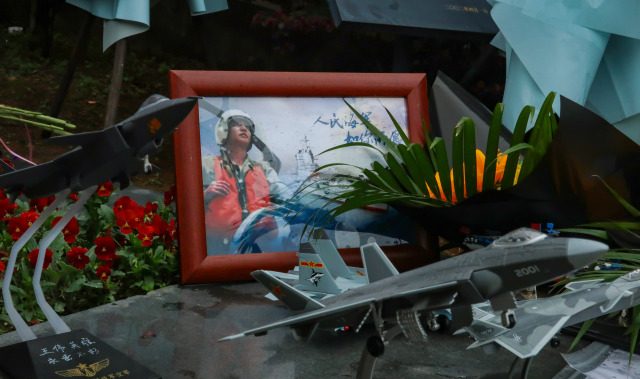The Chinese PLA has kicked off a month-long aerial exercise on Thursday over the disputed South China Sea, commemorating the death of a Chinese pilot in a mid-air collision with a US spy plane 20 years ago.
The exercises are being held in a “circular” zone with a radius of five kilometers in the South China Sea, near the Leizhou Peninsula. A notification issued by China’s Maritime Safety Administration has prohibited the movement of civilian or cargo vessels in the area during the drills.
The Hainan Island Incident
On April 1, 2001, a US Navy EP-3E ARIES II signals intelligence aircraft was intercepted by two Chinese J-8II fighter jets, one of them piloted by Lt. Cdr Wang Wei of the PLA Navy, who made two close passes to the EP-3.
On his third close pass, he collided with the American aircraft and the J-8 (piloted by Lt. Cdr. Wang Wei) broke into two pieces; leaving the EP-3’s radome detached completely and its No. 1 (outer left) propeller severely damaged.
Airspeed and altitude data were lost, the aircraft depressurized, and an antenna became wrapped around the tailplane. The J-8’s tail fin struck the EP-3’s left aileron, forcing it fully upright, and causing the US aircraft to roll to the left at three to four times its normal maximum rate.
Wang was forced to eject from his seriously damaged jet. The Chinese military conducted a 14-day search for the pilot in the South China Sea but failed to find him. Wang’s body was never recovered, and he was presumed dead. He was only nine days away from his 33rd birthday, according to China Military Online.
The crew of the EP-3 then carried out an emergency plan which included destroying sensitive items on board the aircraft, such as electronic equipment related to intelligence-gathering, documents, and data.

The aircraft made an unauthorized emergency landing at Lingshui airfield, after at least 15 distress signals had gone unanswered, with the emergency code selected on the transponder. It landed at 170 knots (200 mph), with no flaps, no trim, and a damaged left elevator, weighing 108,000 pounds (49,000 kg).
Both the cause of the collision and the assignment of blame were disputed. The US government stated that the Chinese jet bumped the wing of the larger, slower, and less maneuverable EP-3.
After returning to the US soil, the pilot of the EP-3, Lt. Shane Osborn, was allowed to make a brief statement in which he said that the EP-3 was on autopilot and in straight-and-level flight at the time of the collision. In his interview with Frontline, he stated that he was just “guarding the autopilot”.
However, based on the account of Wang Wei’s wingman, the Chinese government stated that the American aircraft “veered at a wide-angle towards the Chinese”, in the process ramming the J-8. This claim cannot be verified since the Chinese government did not release data from the flight recorders of either aircraft, both of which are in its possession.
Meanwhile, the incident had a strong geopolitical reaction. The 24 crew members (21 men and 3 women) were detained over a period of 10 days, shortly after the US issued the “letter of the two sorries” to the Chinese. The Chinese military boarded the EP-3 and thoroughly stripped and examined the aircraft’s equipment.
The crew was only partially successful in their destruction of classified material, and some of the material they failed to destroy included cryptographic keys, signals intelligence manuals, and the names of National Security Agency employees. Some of the captured computers contained detailed information for processing PROFORMA communications from North Korea, Russia, Vietnam, China, and other countries.
The plane also carried information on the emitter parameters for US-allied radar systems worldwide. The fact that the United States could track PLAN submarines via signal transmission was also revealed to China.
Twenty years on, the United States and China continue to be at loggerheads over the South China Sea, the entire stretch of which Beijing claims to be its territory.
On March 22, a US Air Force RC-135U reconnaissance aircraft was flying close to South China’s coastal regions and was only 25.3 nautical miles away from China’s territorial sea baseline.
On August 25 last year, a US Air Force U-2 high-altitude reconnaissance aircraft had trespassed into a no-fly zone of a PLA live-fire exercise.